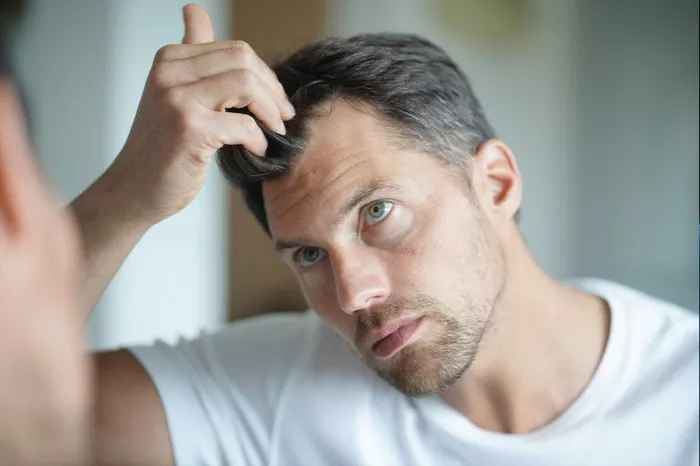In today’s fast-paced world, many people face the distressing issue of hair loss, often referred to as alopecia. This condition can be emotionally challenging and affect one’s self-esteem. But fear not, as there are creams and treatments available to combat alopecia. In this comprehensive guide, we will explore the best creams for alopecia, providing you with valuable insights to help you make informed decisions on how to manage and potentially reverse this condition.
1. Understanding Alopecia: Types and Causes
Before we delve into the world of creams for alopecia, it is crucial to comprehend the condition itself. Alopecia encompasses various types, each with distinct causes. To address alopecia effectively, it’s essential to recognize these distinctions:
a. Androgenetic Alopecia: This is the most common form, often referred to as male or female pattern baldness. It’s primarily caused by genetics and hormonal imbalances.
b. Alopecia Areata: This type is believed to be an autoimmune condition where the body’s immune system attacks hair follicles.
c. Traction Alopecia: Excessive hair pulling or tight hairstyles can lead to this type of alopecia.
d. Telogen Effluvium: Often triggered by stress, certain medications, or other underlying health issues.
2. Topical Creams for Alopecia
Now that we have a solid understanding of alopecia, let’s explore the key players in your journey towards hair restoration – topical creams. These formulations can help stimulate hair growth and manage alopecia effectively. Here are some noteworthy options:
a. Minoxidil (Rogaine): Minoxidil is an FDA-approved topical solution that increases blood flow to hair follicles and promotes hair growth. It’s widely used for androgenetic alopecia.
b. Corticosteroid Creams: These creams are often prescribed for alopecia areata to reduce inflammation and suppress the immune system’s attack on hair follicles.
c. DHT Blockers: Dihydrotestosterone (DHT) is a hormone associated with hair loss. Creams containing DHT blockers can help prevent androgenetic alopecia.
d. Essential Oils: Some essential oils, such as rosemary, lavender, and peppermint oil, have shown promise in promoting hair growth when applied topically.
3. How to Choose the Right Cream for Your Alopecia?
Selecting the best cream for your specific type of alopecia is crucial for effective treatment. To make an informed choice, consider the following factors:
a. Consult a Dermatologist: A qualified dermatologist can determine your alopecia type and recommend the most suitable cream or treatment.
b. Product Ingredients: Examine the ingredients of the cream you choose. Look for clinically proven ingredients known to combat hair loss.
c. User Reviews: Check online reviews and testimonials from others who have used the cream. Their experiences can provide valuable insights.
d. Potential Side Effects: Be aware of any potential side effects associated with the cream and discuss them with your dermatologist.
4. Lifestyle Changes for Alopecia Management
While creams are an integral part of alopecia management, certain lifestyle changes can complement their effects. Here are some actionable steps to consider:
a. Diet and Nutrition: A well-balanced diet rich in vitamins and minerals, such as biotin and zinc, can support healthy hair growth.
b. Stress Management: Practice stress-reduction techniques like yoga, meditation, or mindfulness to minimize the impact of stress-related alopecia.
c. Gentle Hair Care: Avoid harsh treatments, tight hairstyles, and excessive heat styling to prevent further hair damage.
d. Regular Exercise: Physical activity can improve blood circulation, promoting a healthier scalp and hair growth.
5. Combining Treatments for Optimal Results
For some individuals, using a combination of treatments may yield the best results. This could involve pairing topical creams with oral medications or laser therapy. Your dermatologist can guide you on the most effective combination for your specific alopecia type.
6. Measuring Success and Patience
Finally, remember that results may vary, and it may take time to see significant improvements. Document your progress and consult your dermatologist regularly to adjust your treatment plan as needed.
See Also: Will Hair Grow Back After Ringworm Treatment: A Quick Guide
In conclusion
Managing alopecia and finding the right cream involves understanding the type of alopecia you have, choosing the right product, making lifestyle changes, and practicing patience. By following these steps, you can embark on a journey to regaining your confidence and maintaining a healthy head of hair. Alopecia is a challenge, but with the right knowledge and determination, it can be managed effectively. Don’t hesitate to consult a dermatologist to start your path toward hair restoration.


